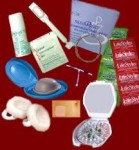 Musculoskeletal health is one of the areas of medicine in which differences between males and females are most striking. Although males have a higher incidence of traumatic injuries, females are disproportionately disabled by musculoskeletal conditions such as adolescent spinal deformities, ACL injuries, osteoarthritis, and osteoporotic fragility fractures. Therapeutic modalities have been based on studies of male populations or young adult male animals, or the studies do not specify the sex of the population. Understanding of these conditions as they occur throughout the human life span thus has been limited with respect to sex. Fostering research The American Academy of Orthopaedic Surgeons (AAOS) Women’s Health Issues Advisory Board (WHIAB) seeks to advocate, advance, and serve as a resource on sex and gender differences in musculoskeletal health and research. Since females suffer from disease in different ways than males, recognizing sex-related differences is critical to optimizing patient care. In an effort to foster the mission of the WHIAB, the Journal of Orthopaedics is featuring 10 articles which highlight research focused on sexual dimorphism in orthopaedics. Sexual dimorphism is considered a priority within the spectrum of orthopaedic research as demonstrated within these articles, including research in basic science, anatomy, biochemistry, hormonal, physiological, neuromuscular, and clinical form and function of bone and soft tissues.
Musculoskeletal health is one of the areas of medicine in which differences between males and females are most striking. Although males have a higher incidence of traumatic injuries, females are disproportionately disabled by musculoskeletal conditions such as adolescent spinal deformities, ACL injuries, osteoarthritis, and osteoporotic fragility fractures. Therapeutic modalities have been based on studies of male populations or young adult male animals, or the studies do not specify the sex of the population. Understanding of these conditions as they occur throughout the human life span thus has been limited with respect to sex. Fostering research The American Academy of Orthopaedic Surgeons (AAOS) Women’s Health Issues Advisory Board (WHIAB) seeks to advocate, advance, and serve as a resource on sex and gender differences in musculoskeletal health and research. Since females suffer from disease in different ways than males, recognizing sex-related differences is critical to optimizing patient care. In an effort to foster the mission of the WHIAB, the Journal of Orthopaedics is featuring 10 articles which highlight research focused on sexual dimorphism in orthopaedics. Sexual dimorphism is considered a priority within the spectrum of orthopaedic research as demonstrated within these articles, including research in basic science, anatomy, biochemistry, hormonal, physiological, neuromuscular, and clinical form and function of bone and soft tissues.
Improved Healthcare Delivery
An approach tailored to the separate biologic needs of females and males through basic science and clinical research will enable healthcare providers to address each patient based on his or her individual biologic needs. Interventions, therapeutic modalities, and best future practices based on sexual dimorphism will improve healthcare delivery for all patients.
Sex-Related Differences in Neuromuscular Control: Implications for Injury Mechanisms or Healthy Stabilisation Strategies?
Teresa E. Flaxman, Andrew J. J. Smith, and Daniel L. Benoit
Effects of ACL reconstruction surgery on muscle activity of the lower limb during a jump-cut maneuver in males and females
Margaret S. Coats-Thomas, Daniel L. Miranda, Gary J. Badger and Braden C. Fleming
Knee rotation in healthy individuals related to age and gender
Per O. Almquist, Charlotte Ekdahl, Per-Erik Isberg and Thomas Fridén
Effect of Age and Gender on Cell Proliferation and Cell Surface Characterization of Synovial Fat Pad Derived Mesenchymal Stem Cells
Emma Fossett, Wasim S. Khan, Umile Giuseppe Longo, and Peter J. Smitham
Morphology of the Proximal Femur Differs Widely with Age and Sex: Relevance to Design and Selection of Femoral Prostheses
David S. Casper, Gregory K. Kim, Javad Parvizi, and Theresa A. Freeman
Gender and condylar differences in distal femur morphometry clarified by automated computer analyses
Kang Li, Evan Langdale, Scott Tashman, Christopher Harner and Xudong Zhang
Viscoelastic properties of human cortical bone tissue depend on gender and elastic modulus
Ziheng Wu, Timothy C. Ovaert and Glen L. Niebur
Gender Differences in Both Active and Passive Parts of the Plantar Flexors Series Elastic Component Stiffness and Geometrical Parameters of the Muscle-Tendon Complex
Alexandre Fouré , Christophe Cornu, Peter J. McNair, and Antoine Nordez
Age, sex, body anthropometry, and ACL size predict the structural properties of the human anterior cruciate ligament
Javad Hashemi, Hossein Mansouri, Naveen Chandrashekar, James R. Slauterbeck, Daniel M. Hardy and Bruce D. Beynnon
Gender differences in 3D morphology and bony impingement of human hips
Ichiro Nakahara, Masaki Takao, Takashi Sakai, Takashi Nishii, Hideki Yoshikawa and Nobuhiko Sugano
SOURCE: Journal of Orthopaedic Research (JOR), in conjunction with the AAOS Women’s Health Issues Advisory Board, published a special virtual issue highlighting articles that focus on musculoskeletal sex differences.
Edited by: Laura M. Bruse Gehrig, MD, and the chairs the AAOS Women’s Health Issues Advisory Board. It is available online at http://onlinelibrary.wiley.com/journal/10.1002/%28ISSN%291554-527X/homep...
 The Women’s Health Research Institute at Northwestern University applauds the recent release of a new Action Plan developed the Food in Drug Administration in response to a Congressional directive to look closer at the inclusion and analysis of demographic subgroups including women and minorities in applications for new drugs and devices.
The Women’s Health Research Institute at Northwestern University applauds the recent release of a new Action Plan developed the Food in Drug Administration in response to a Congressional directive to look closer at the inclusion and analysis of demographic subgroups including women and minorities in applications for new drugs and devices.
 Last night I watched American Ninja Warrior because Internet sensation Kacy Catanzaro, a 5 ft, 100 lb athlete, was the only women competing in the American Ninja Warrior Finals. Despite 2 years of training, she simply could not complete the "jumping spider" obstacle part of the course last night. In the replays, you could see that her legs connected well with the walls, but her arms could not span the gap adequately. Evidently she worked hard on this task and likely made it during practice but men (or women) with wider arm spans have a greater likelihood of connecting with a wall with 'all fours'.
Last night I watched American Ninja Warrior because Internet sensation Kacy Catanzaro, a 5 ft, 100 lb athlete, was the only women competing in the American Ninja Warrior Finals. Despite 2 years of training, she simply could not complete the "jumping spider" obstacle part of the course last night. In the replays, you could see that her legs connected well with the walls, but her arms could not span the gap adequately. Evidently she worked hard on this task and likely made it during practice but men (or women) with wider arm spans have a greater likelihood of connecting with a wall with 'all fours'. Melina Kibbe, MD reported in a new study that surgical researchers rarely use female animals or cells in the published studies---despite a huge body of evidence showing that sex differences can play a critical role in medical research. "Women make up half the population, but in surgical literature, 80 percent of the studies only include males," said Kibbe. Published Aug. 28 in the journal Surgery, the study follows a "60 Minutes" segment aired in February that featured Dr. Kibbe and raised concerns that overlooking sex differences in biomedical research could lead to serious adverse effects.
Melina Kibbe, MD reported in a new study that surgical researchers rarely use female animals or cells in the published studies---despite a huge body of evidence showing that sex differences can play a critical role in medical research. "Women make up half the population, but in surgical literature, 80 percent of the studies only include males," said Kibbe. Published Aug. 28 in the journal Surgery, the study follows a "60 Minutes" segment aired in February that featured Dr. Kibbe and raised concerns that overlooking sex differences in biomedical research could lead to serious adverse effects. Reasons to try the Mediterranean Diet:
Reasons to try the Mediterranean Diet: Medicaid patients in Illinois (our home state!) could gain increased access to contraception under policy changes proposed August 18 by the Department of Healthcare and Family Services, according to the
Medicaid patients in Illinois (our home state!) could gain increased access to contraception under policy changes proposed August 18 by the Department of Healthcare and Family Services, according to the  It’s been over a year since the controversial Texas law (
It’s been over a year since the controversial Texas law ( Podiatrists call stiletto's "shoe-icide". They can lead to sprained ankles, a permanent "pump bump" on the heel, deformity, chronic pain and even hairline fractures. Certain ballet flats can also cause serious problems. To learn more about the potential health problems and solutions that allow you to stay fashionable, visit this
Podiatrists call stiletto's "shoe-icide". They can lead to sprained ankles, a permanent "pump bump" on the heel, deformity, chronic pain and even hairline fractures. Certain ballet flats can also cause serious problems. To learn more about the potential health problems and solutions that allow you to stay fashionable, visit this  Musculoskeletal health is one of the areas of medicine in which differences between males and females are most striking. Although males have a higher incidence of traumatic injuries, females are disproportionately disabled by musculoskeletal conditions such as adolescent spinal deformities, ACL injuries, osteoarthritis, and osteoporotic fragility fractures. Therapeutic modalities have been based on studies of male populations or young adult male animals, or the studies do not specify the sex of the population. Understanding of these conditions as they occur throughout the human life span thus has been limited with respect to sex. Fostering research The American Academy of Orthopaedic Surgeons (AAOS) Women’s Health Issues Advisory Board (WHIAB) seeks to advocate, advance, and serve as a resource on sex and gender differences in musculoskeletal health and research. Since females suffer from disease in different ways than males, recognizing sex-related differences is critical to optimizing patient care. In an effort to foster the mission of the WHIAB, the Journal of Orthopaedics is featuring 10 articles which highlight research focused on sexual dimorphism in orthopaedics. Sexual dimorphism is considered a priority within the spectrum of orthopaedic research as demonstrated within these articles, including research in basic science, anatomy, biochemistry, hormonal, physiological, neuromuscular, and clinical form and function of bone and soft tissues.
Musculoskeletal health is one of the areas of medicine in which differences between males and females are most striking. Although males have a higher incidence of traumatic injuries, females are disproportionately disabled by musculoskeletal conditions such as adolescent spinal deformities, ACL injuries, osteoarthritis, and osteoporotic fragility fractures. Therapeutic modalities have been based on studies of male populations or young adult male animals, or the studies do not specify the sex of the population. Understanding of these conditions as they occur throughout the human life span thus has been limited with respect to sex. Fostering research The American Academy of Orthopaedic Surgeons (AAOS) Women’s Health Issues Advisory Board (WHIAB) seeks to advocate, advance, and serve as a resource on sex and gender differences in musculoskeletal health and research. Since females suffer from disease in different ways than males, recognizing sex-related differences is critical to optimizing patient care. In an effort to foster the mission of the WHIAB, the Journal of Orthopaedics is featuring 10 articles which highlight research focused on sexual dimorphism in orthopaedics. Sexual dimorphism is considered a priority within the spectrum of orthopaedic research as demonstrated within these articles, including research in basic science, anatomy, biochemistry, hormonal, physiological, neuromuscular, and clinical form and function of bone and soft tissues. Amyotrophic lateral sclerosis (ALS), more commonly referred to as Lou Gehrig's Disease, is a neurodegenerative disease that affects the function of nerves and muscles in the body--and it has been getting a lot of attention lately. ALS is the "progressive degeneration of the motor neurons," and when the motor neurons die, the "ability of the brain to initiate and control muscle movement is lost," which eventually leads to paralysis and death. ALS is 20% more common in men than women, but as one's age increases, the incidence of ALS equalizes between the sexes. The ALS Association was established in 1985 to fight this disease by leading the way in research, care services, public education, and public policy. It was not until this year, however, that the ALS Association began to attract national social media attention with their Ice Bucket Challenge. The ALS Ice Bucket Challenge has exploded on social media sites and has inspired a surge of funding for this disorder.
Amyotrophic lateral sclerosis (ALS), more commonly referred to as Lou Gehrig's Disease, is a neurodegenerative disease that affects the function of nerves and muscles in the body--and it has been getting a lot of attention lately. ALS is the "progressive degeneration of the motor neurons," and when the motor neurons die, the "ability of the brain to initiate and control muscle movement is lost," which eventually leads to paralysis and death. ALS is 20% more common in men than women, but as one's age increases, the incidence of ALS equalizes between the sexes. The ALS Association was established in 1985 to fight this disease by leading the way in research, care services, public education, and public policy. It was not until this year, however, that the ALS Association began to attract national social media attention with their Ice Bucket Challenge. The ALS Ice Bucket Challenge has exploded on social media sites and has inspired a surge of funding for this disorder. Office workers with more light exposure at the office had longer sleep duration, better sleep quality, more physical activity and better quality of life compared to office workers with less light exposure in the workplace, reports a new study from Northwestern Medicine and the University of Illinois at Urbana-Champaign.
Office workers with more light exposure at the office had longer sleep duration, better sleep quality, more physical activity and better quality of life compared to office workers with less light exposure in the workplace, reports a new study from Northwestern Medicine and the University of Illinois at Urbana-Champaign.